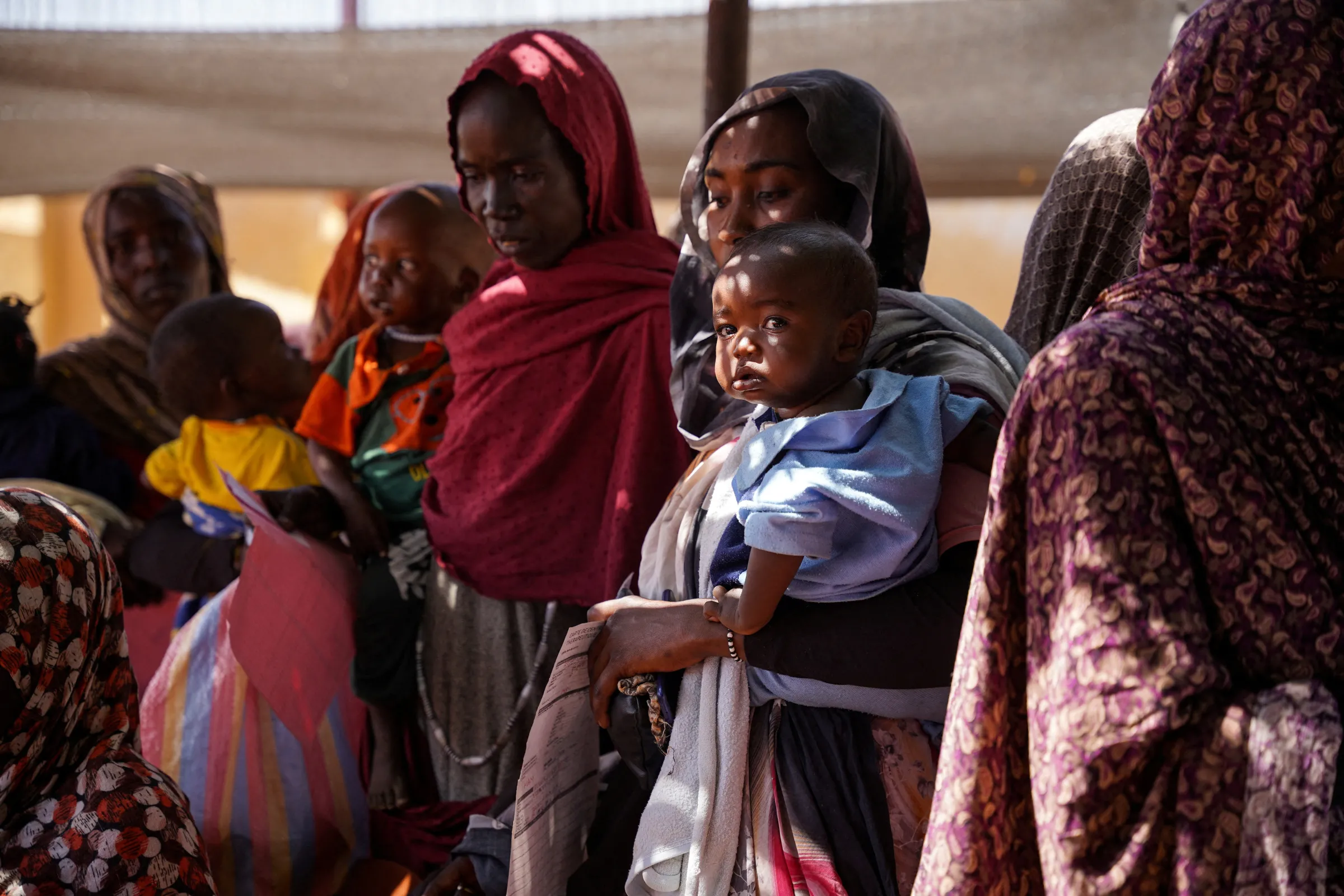Sexual violence reaches unprecedented levels in Sudan war

Women and babies at the Zamzam displacement camp, close to al-Fashir in North Darfur, Sudan. January 2024. MSF/Mohamed Zakaria/Handout via REUTERS
What’s the context?
Sudanese women and children suffer brunt of conflict as it rages into its third year.
NAIROBI - As Sudan's civil war escalates into its third year, women and girls are bearing the brunt of the crisis. Displaced, vulnerable and targeted, they are facing unprecedented levels of sexual violence, warn aid workers.
Sudanese women were at the forefront of the 2019 revolution that led to the ousting of president Omar al-Bashir, who took power in 1989.
From students and academics to housewives and street traders, women and girls led demonstrations and occupied the streets in the face of arrests, teargas, bullets and sexual assault by security agents.
But two years of conflict in the northeast African nation has subject them to levels of sexual violence never seen before.
Here's what you need to know about the war and its impact on Sudan's women and girls.
How did the conflict start?
Fighting between the Sudanese army and the country's main paramilitary group, the Rapid Support Forces (RSF), erupted in the capital, Khartoum, on April 15, 2023.
The army backs General Abdel Fattah al-Burhan, the de facto ruler, while the RSF supports his former deputy, General Mohamed Hamdan Dagalo, known as Hemedti.
Tensions rose over disagreements on transitioning to civilian rule after Bashir's overthrow.
Both sides blame the other for starting the violence, which swiftly escalated and spread to other parts of the country.
How have civilians been affected?
More than 28,700 fatalities have been reported, including some 7,500 civilians, according to the Armed Conflict Location and Event Data Project.
More than 12 million people have been displaced, with 3 million becoming refugees, fleeing to neighbouring Chad, South Sudan, Egypt, Ethiopia and the Central African Republic.
Thousands continue to stream across borders daily, the United Nations says.
For those who remain, hunger has reached historic levels, with nearly 25 million people facing acute food insecurity. Famine has been confirmed in the eastern Nuba mountains and North Darfur state.
The U.N. children's agency, UNICEF, estimates that 770,000 children aged under 5 will suffer from severe acute malnutrition in 2025. Children in this condition are 10 times more likely to die from disease than a healthy child.
The war has also decimated critical infrastructure and crippled access to essential public services.
Most hospitals are not functioning due to bombardments, supply shortages and attacks on health workers, and more than 17 million children are out of school, while their classrooms have been repurposed as shelters for the displaced.
What has been the impact on women and girls?
Since the war began, a surge in systematic rape has been reported, showing how sexual violence is used as a weapon of war in Sudan.
In 2024, demand for services linked to gender-based violence nearly quadrupled, according to UN Women. These services include medical, psychological and social support for victims.
Organisations including UNICEF, Save the Children, Amnesty International and Human Rights Watch have recorded cases of sexual violence, with victims between 1- and 75-years-old.
Most of the sexual violence has been committed by the RSF and allied militias in an attempt to terrorise and punish people, according to a U.N. fact-finding mission in October.
Last month, UNICEF said children under age 5, including babies, were among the victims. It cited a database compiled by Sudan-based groups that showed that of the 221 cases involving children registered since 2024, 16 were under 5-years-old, including four 1-year-olds. A third of victims were male.
Aid workers and rights groups believe the database represents just a fraction of the cases, because stigma, fear of reprisals and a lack of medical facilities limit reporting.
Economic hardship and the risk of famine are also driving some women and girls into transactional sex, further exposing them to gender-based violence and sexually transmitted infections, including HIV.
Risks of child marriage, female genital mutilation and other forms of gender-based violence have increased as a consequence of the conflict. Three in four school-aged girls, or about 2.5 million children, are out of school.
(Reporting by Nita Bhalla; Editing by Ayla Jean Yackley)
Context is powered by the Thomson Reuters Foundation Newsroom.
Our Standards: Thomson Reuters Trust Principles
Tags
- Gender equity
- War and conflict

















